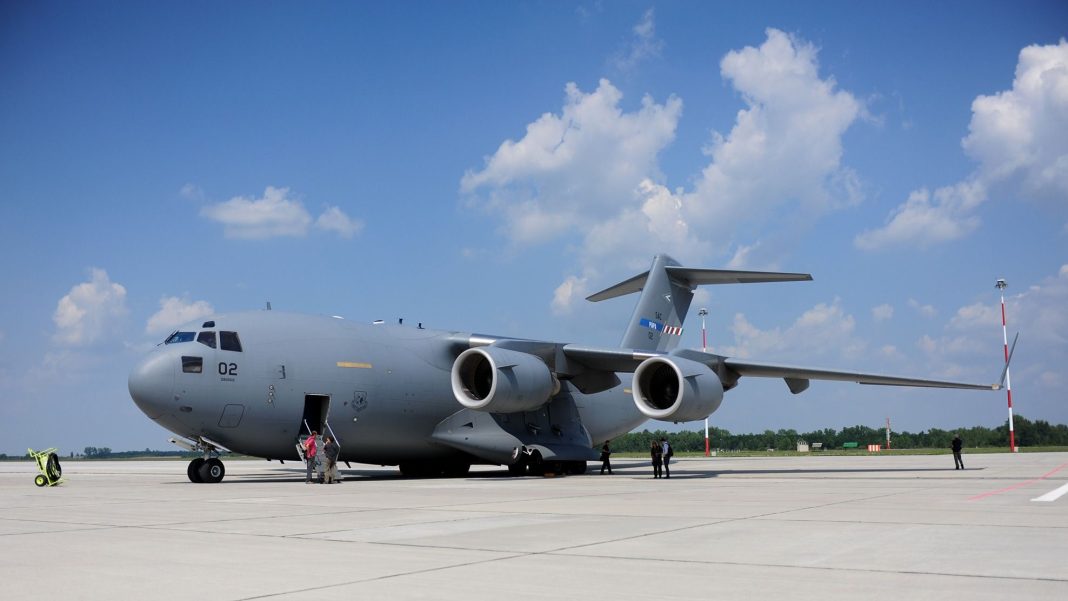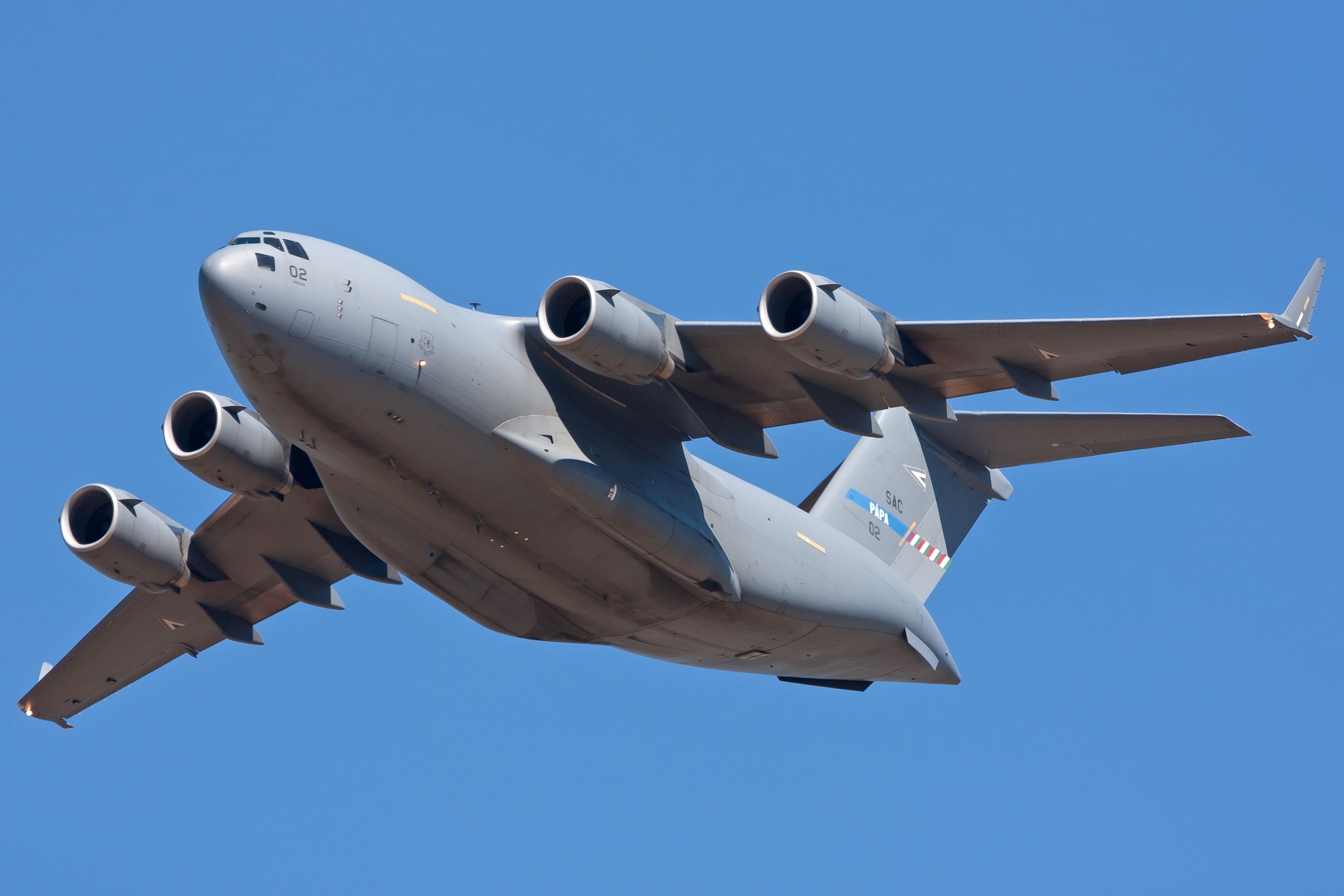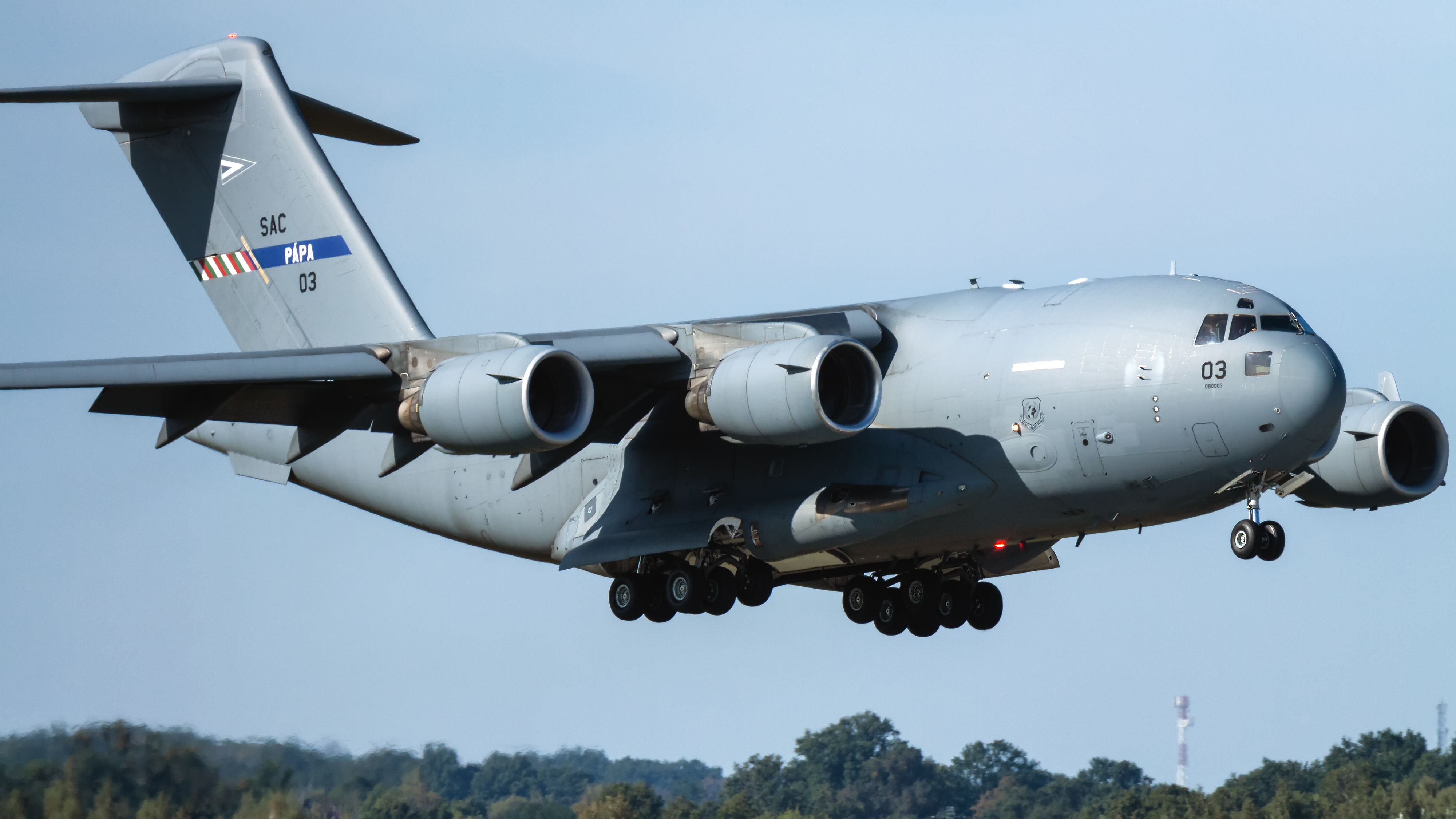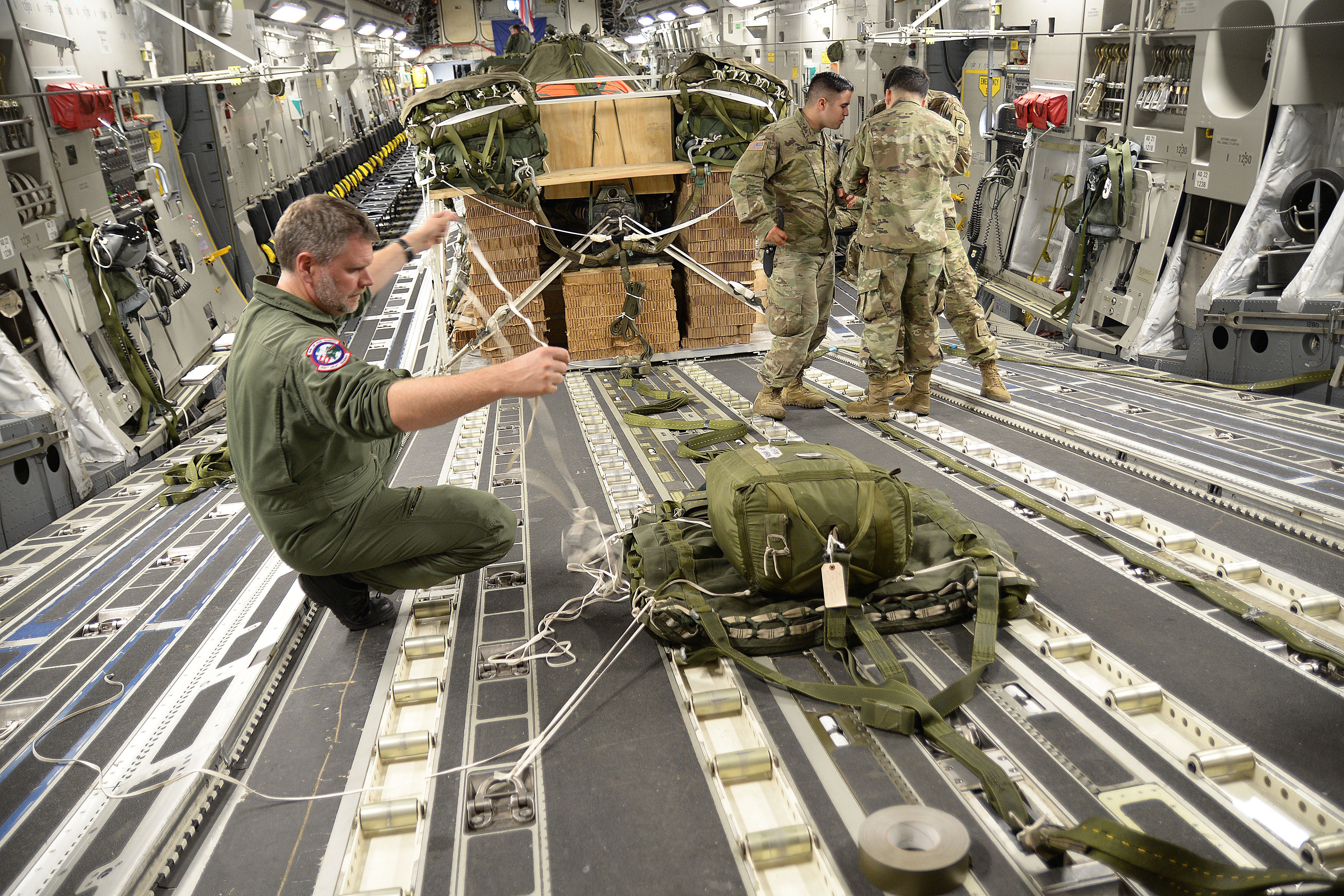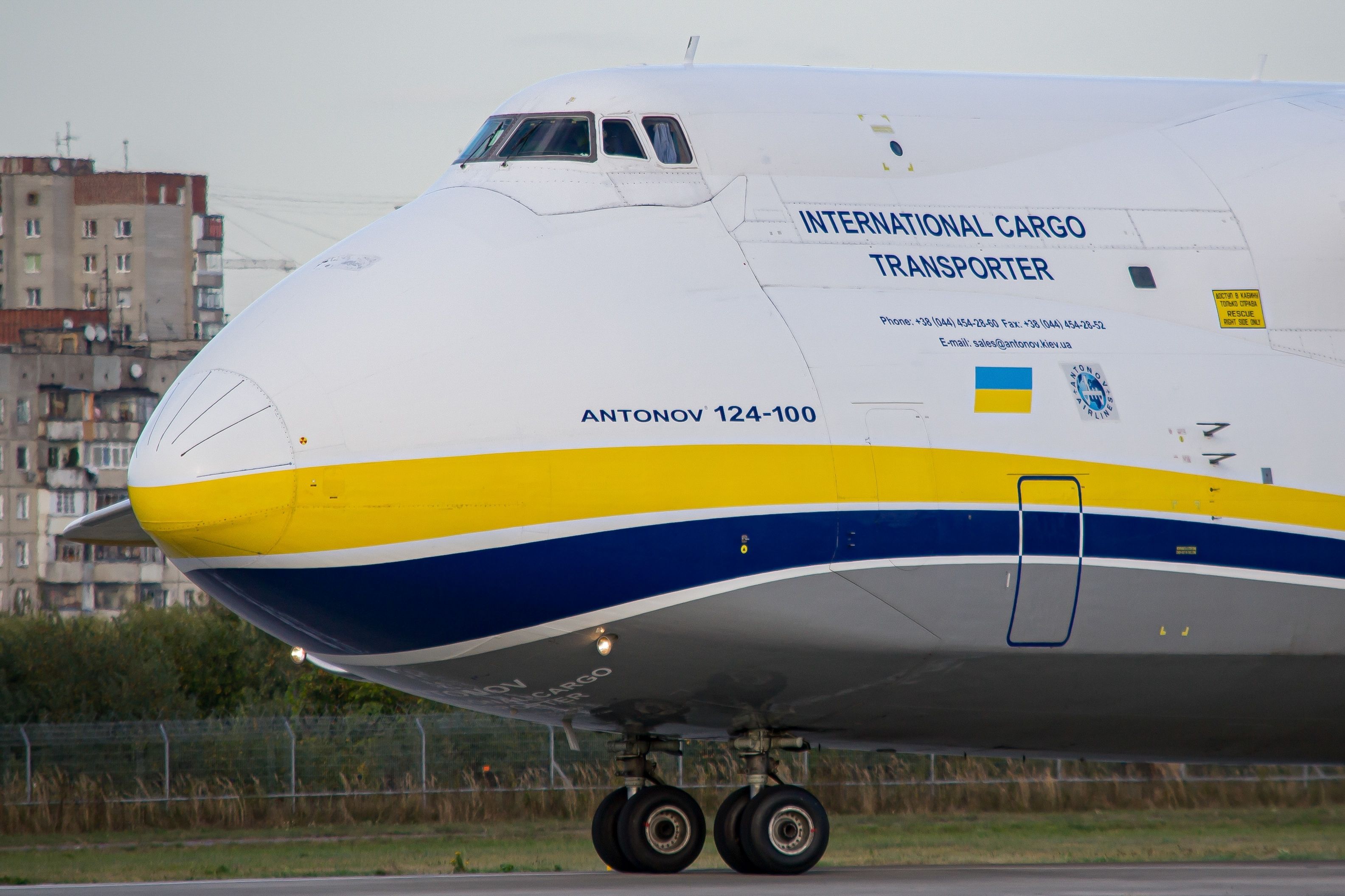Summary
- The early 2000s were a crucial time for NATO’s development, with actions taken to prevent terrorism, expand the alliance, and improve defense.
- In 2008, several NATO countries established the Strategic Airlift Capability (SAC).
- The SAC, operated by the alliance’s member countries, has played a significant role in various important missions.
The early 2000s for the North Atlantic Treaty Organization (NATO) were vital for the alliance’s further development over the following decades. For one, the September 11th attacks resulted in the United States and the coalition putting boots on the ground in Afghanistan to “ensure that the country would not again become a safe haven for international terrorists to attack NATO member countries,” according to NATO.
Secondly, during the Prague Summit 2002, the alliance invited Bulgaria, Estonia, Latvia, Lithuania, Romania, Slovakia, and Slovenia to begin accession talks into NATO, expanding the bloc into Eastern Europe, a critical geopolitical frontier. Lastly, the Summit resulted in NATO countries’ leaders approving the Prague Capabilities Commitment (PCC), which improved the alliance’s capabilities for defending against many threats and the surveillance of adversaries’ movements and communications.
Launching the airlift initiative
The PCC also included a pledge to improve NATO’s “strategic air and sea-lift” operations. In June 2004, when the alliance’s leaders met at the Istanbul Summit, the bloc pursued to launch “a number of multinational projects aimed at enhancing military capabilities in critical areas such as strategic sealift and airlift capabilities, air-to-air refuelling and the Alliance ground surveillance system.” NATO also outlined its logistics policies, namely that,
“NATO must be able to ensure the strategic mobility of troops and materiel by providing adequate lift, transportation facilities, equipment and infrastructure.”
Photo: Wirestock Creators | Shutterstock.com
According to the alliance, this included using civilian resources through multinational initiatives, resulting in commercial charter agreements for strategic airlift purposes. One example could be the US Civil Reserve Air Fleet (CRAF), which includes multiple commercial airlines providing their aircraft for emergencies for the US Air Force (USAF). Nevertheless, 13 NATO countries announced a Letter of Intent (LoI) to begin contract negotiations with Boeing to purchase Boeing C-17 Globemaster III aircraft for the NATO Strategic Airlift Capability (SAC) that would be based at Ramstein Air Force Base in Germany. “Initially comprised of 3 to 4 C-17s, the SAC will be flown by multinational aircrews (pilots and loadmasters) and a multinational military structure will be created to command and control the aircraft,” NATO’s announcement read at the time.
In 2008, the ball continued rolling, and the alliance’s countries first signed the Charter of a NATO Production and Logistics Organisation (NPLO), which established the NATO Airlift Management Organisation (NAMO). As a result, the NATO Airlift Management Agency (NAMA) was established, with the agency’s primary role being acquiring, managing, and supporting airlift assets on behalf of actively participating SAC countries. Finally, in 2008, 12 countries established the SAC with an agreement to jointly purchase three C-17s to operate the aircraft while sharing costs, resources, and flight hours.
Photo: Rudzenka | Shutterstock.com
Sharing C-17s among NATO members
The SAC received its first aircraft in July 2009, when Boeing delivered a C-17 in Long Beach, California. However, by then, the SAC’s planned operating base had moved from Germany to Pápa Air Base, Hungary. At the time, the now-retired USAF Colonel John Zazworsky, who became the Heavy Airlift Wing’s (HAW) first commander, said that the first C-17, as well as the two that will follow, “is a direct result of their commitment to giving SAC advanced airlift capabilities that will save lives around the world. We look forward to our first mission.” To note, the HAW is the operational arm of the SAC. In addition, the NATO Support and Procurement Agency (NSPA) took over the management of the SAC in July 2012.
According to NATO, military personnel from the participating countries operate the HAW, ensuring that the wing and, in turn, the SAC can provide the required airlift capabilities. The SAC has participated in various missions, including the International Security Assistance Force in Afghanistan, the Kosovo Force (KFOR), Operation Unified Protector in Libya, and multiple humanitarian efforts in Haiti, Pakistan, and Africa.
Most recently, the C-17s helped transport personnel, equipment, and Personal Protective Equipment during the peak of COVID-19. The SAC also participated in bringing refugees and NATO personnel out of Afghanistan in August 2021, when the alliance’s troops were beginning to leave the country. Several airlines have also participated in governmental charters to help evacuate people out of Afghanistan, including Germany’s Lufthansa.
Photo: USAF
The SAC also operated nine missions in and out of Turkey in February 2023, when two earthquakes in several hours hit southern Turkey and northern Syria, resulting in massive damage to the area and several thousand fatalities. The alliance noted that the Globemaster IIIs transported “340 tons of urgent equipment and personnel to the country on behalf of Finland, the Netherlands, Romania, Sweden and the United States.”
Outsized cargo operations
NATO has also described the C-17 as one of the world’s universal cargo aircraft, with the quadjet capable of carrying loads of up to 169,779 pounds (77,000 kilograms) to destinations up to 2,400 nautical miles (4,450 kilometers away). The versatility of the aircraft is not down to its size, either, as the C-17 is capable of performing “tactical airlift, airdrop missions and aeromedical evacuations in the most difficult environments and austere conditions,” with the three aircraft mimicking the configuration of the USAF’s C-17s.
However, NATO has always had the demand to transport outsized cargo. While the C-17s are capable aircraft, a family of transporters outclasses all when it comes to heavy airlift capability: the Antonov An-124. The Antonov An-225 was even more impressive, but it sadly met its demise during Russia’s illegal invasion of Ukraine in February 2022.
Photo: Oleh Yatskiv | Shutterstock
The alliance has the Strategic Airlift International Solution (SALIS), which united nine countries chartering the An-124 “in support of national, NATO and EU operations and missions.” According to NATO, SALIS provides access to one An-124 on a 72-hour notice, an additional Ruslan on six days’ notice, and one more within nine days. Lastly, two more aircraft are subject to availability. In 2022, the An-124s flew for 2,103 flight hours on behalf of the nine SALIS countries.
[ad_2]
Source link
